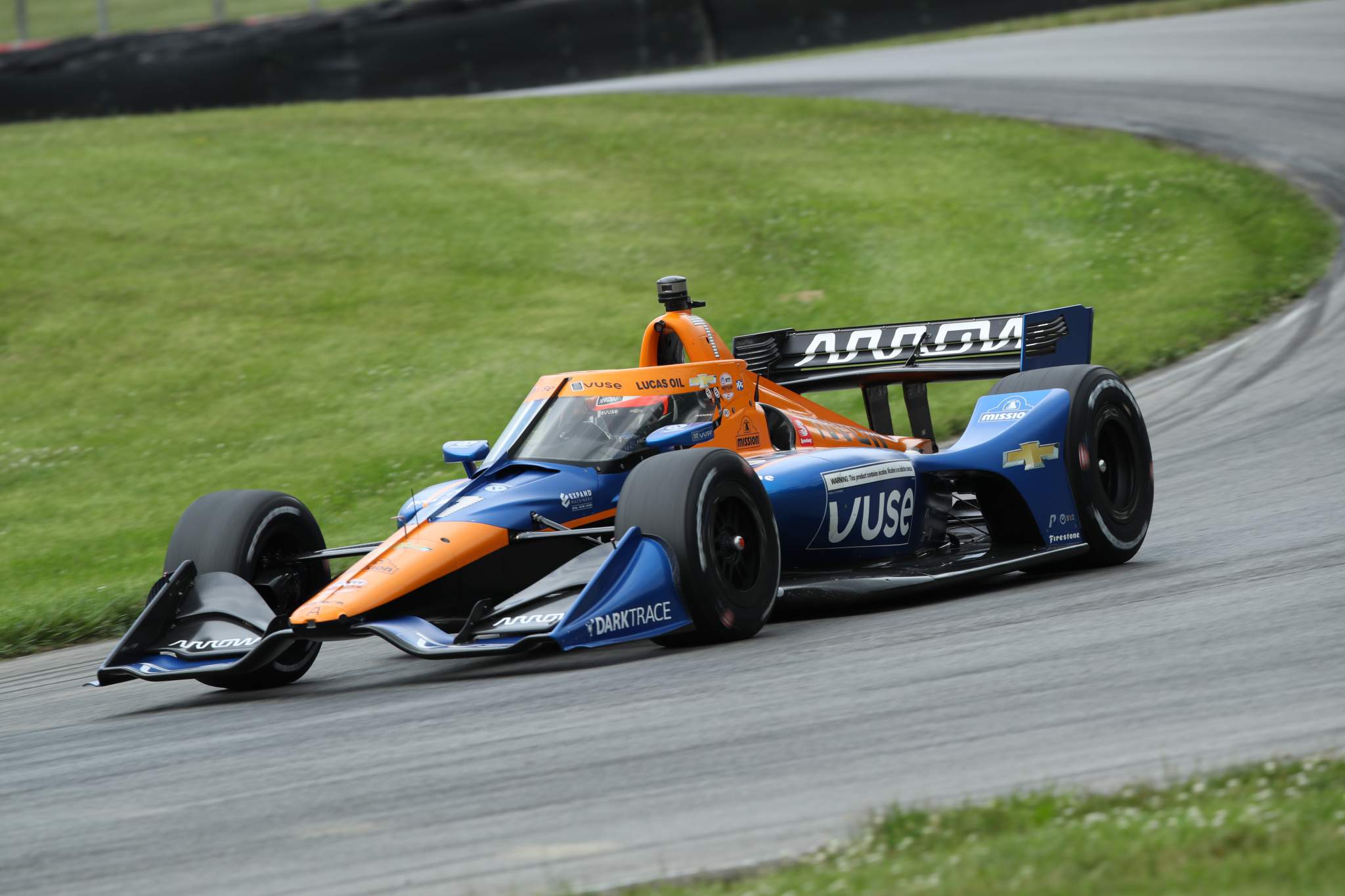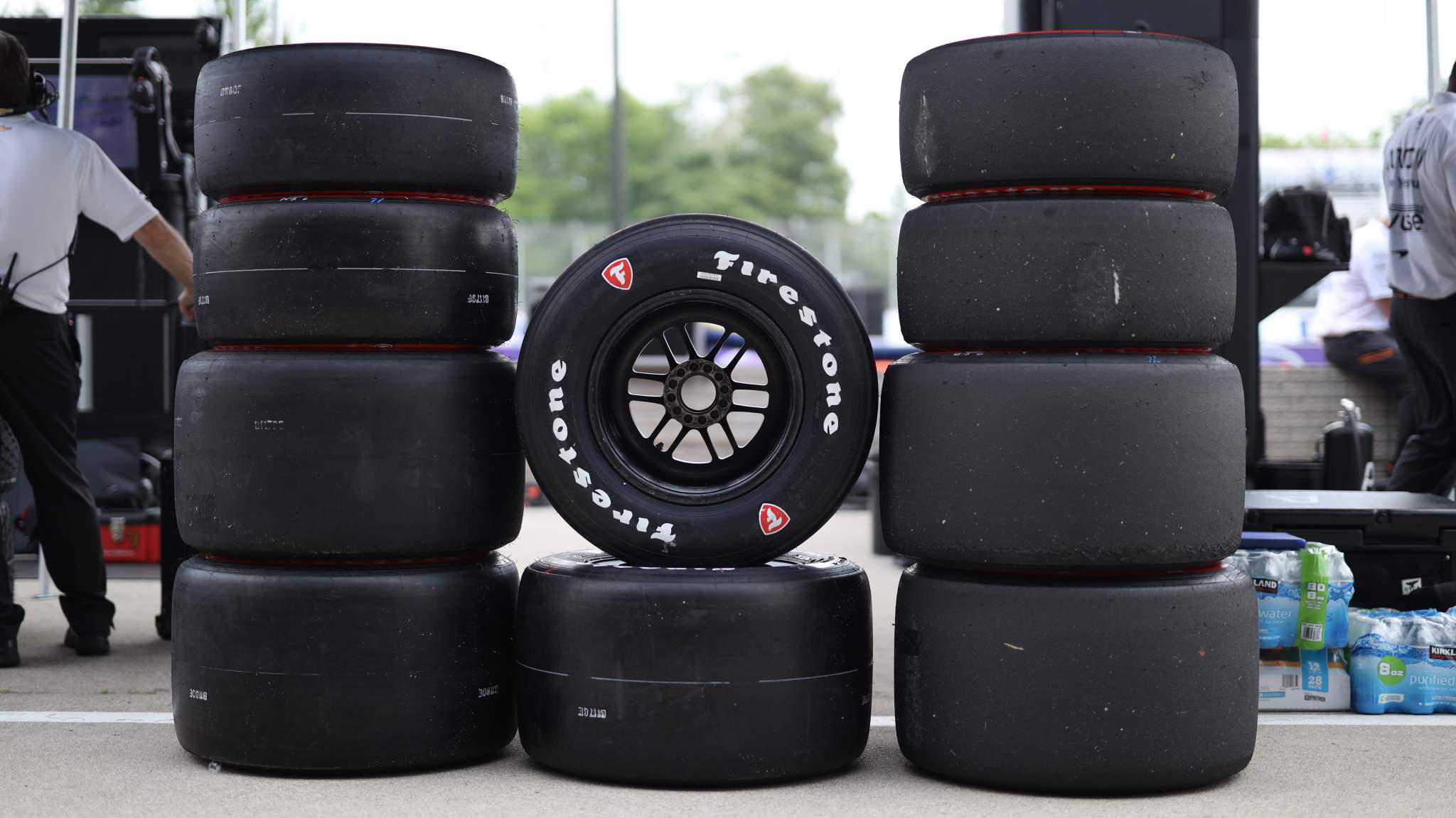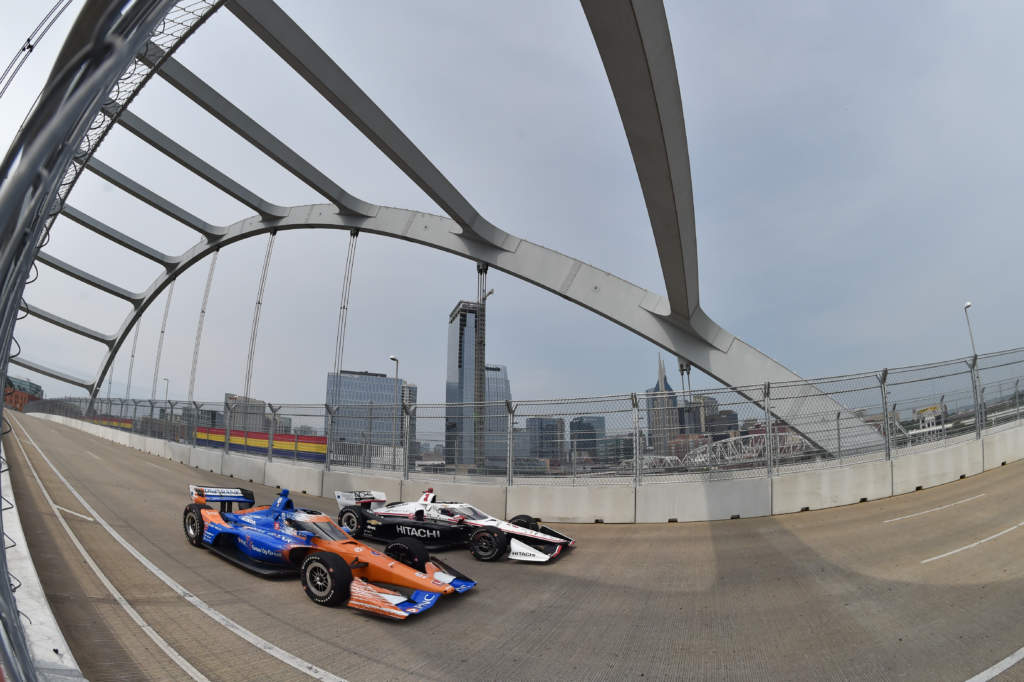For the first time since 2011 in Baltimore, IndyCar has a new street circuit and it looks like a good one.
Nashville has earned somewhat of a motorsport resurgence with NASCAR and SRX both visiting the state recently, and the organisers have done a phenomenal job of promoting the event locally and further afield.
However, chances are you’ve read about this already. What we haven’t been able to do is take a better look at the track – an 11-turn, 2.17-mile downtown thriller – which has only just finished being built with its 2000 12-foot sections of barrier among the logistical challenges.
“It’s definitely going to be a tough one,” Romain Grosjean told The Race ahead of the weekend.
“It is challenging and it’s bumpy, the bridge and then those big braking with lateral G-Forces and then those very, very low-speed sections are tiny and twisted and quite a bit of elevation change.
“But that’s really good and I’m looking forward to it, to see what it’s like.”
Without further ado, The Race can talk you through a lap of the circuit and highlight some of the key aspects that will affect the racing at the weekend.
A lap of the track
Luckily, The Race IndyCar Podcast hero Grosjean did a walkthrough of the track on a Honda simulator this week, so you can take a ride and listen along as he talks you through it below, before we go into some more written detail here.
Turns 1 and 2 will just be about carrying speed before Turn 3, where the focus is on getting the power down early but not getting tail-happy, as this corner exits onto the Korean War Veteran’s Memorial Bridge, the showpiece of the track. It’s a long straight, so traction out of Turn 3 is important.
Just before the end of the Bridge straight there’s a kink to the right where cars will move over before the 90-degree left at Turn 4, which will be one of two obvious overtaking points coming at the end of a straight.
Careful though; getting on the power early exiting to complete a move at Turn 4 could be treacherous as immediately following the corner the track narrows and goes to the right quickly at Turn 5, before tight double left-handers at Turns 6 and 7.
Turn 8 is similar to Turn 3 in that the focus is on getting the power down early without inducing oversteer to carry speed onto the longer, back straight re-crossing the bridge.
However, there’s a lot of lock on the wheel required to get the car turned in for Turn 8, so it’s far from easy. And some bumps might complicate matters further for the drivers.
Three-quarters of the way down the bridge back straight the track veers right, and it’s extremely bumpy here which could really upset the cars heading into the extreme braking point for what is actually one of the fastest corners on the track at Turn 9, which is another 90-degree turn but is very wide on entry.
After Turn 9 the straight with a kink to the left is wide enough to fit two cars side by side, as is Turn 10.
The exit of the corner is quite slow, so this could be a prime spot for drivers losing the rear end on acceleration and giving those behind a chance to capitalise.
The pit entrance is just after Turn 10, so drivers will have to factor in cars diving left for service here too.
Turn 11, another 90-degree left that feels narrow on the exit, ends the lap.
INDYCAR on the streets of Nashville is a beautiful thing.
Ride along with hometown hero @josefnewgarden on the ceremonial first lap of the @MusicCityGP.#INDYCAR // #MusicCityGP pic.twitter.com/NB2RDRTSTe
— NTT INDYCAR SERIES (@IndyCar) August 6, 2021
A wild start in store
Like some other tracks on the IndyCar calendar – think Mid-Ohio – the start of the race is in a different place to the finish of the lap. So while Turn 1 is just after the finish line on the straight in front of the Nissan Stadium, the start of the race will take place from the bridge down into Turn 9.
This presents its own challenges as there will be a run to the first corner which starts wide but narrows on the exit and could provide a bit of a log jam for cars behind. Being one of the leading group heading into it will be vital.
“It’s gonna be a long run down there, it’s going to be very wide into Turn 9 where we start to race,” says Formula E race winner Felix Rosenqvist of Arrow McLaren SP.
“I think it’s probably going to be a bit like Cleveland back in the day when you have like, 20 cars trying to go into the space of maybe two cars. Somehow it seems like drivers always figure it out.”
Well, not always Felix!
Cleveland, that’s an image all retro IndyCar fans will be happy to hear and see of again.
To clarify the point, Turn 9 starts wide and ends narrow with 27 cars bunched up and trying to take the same piece of real estate. It could be bedlam.
Overtaking
This seems like a fairly obvious one, that there are two long straights with 90-degree corners at the end. Those are the obvious spots to expect overtaking.
However, sticking with arguably the best person to take advantage of this weekend because of his experience in learning new street tracks quickly, Rosenqvist isn’t convinced overtaking is as straightforward as it may seem.
“I think there’s going to be a lot of those kind of surprise corners that you have on every street track.

“Especially in Nashville, I think it’s Turn 10 – on the back straight you do the left and then there’s another pretty hard braking.
“I think there’s definitely some potential. Even the one after, Turn 11.
“Pretty much every corner is a 90 degree, which means that you can probably overtake if you want to. But the track is really wide in some sections and really, really narrow in some.
“I think personally it’s going to be as good as any other street race, in terms of racing.”
Rosenqvist has raced on just about every street circuit there is from his junior career to his two and a half years in the States, so who are we to argue with his assessment?
Brakes & tyres
The track being new doesn’t just affect the drivers, it affects the teams and the suppliers of some of the spec parts involved in the series too.
Damper packages will be vital this weekend as one of the last bastions of free development in the series and they play a big role in the car’s reaction to bumps. But it looks like brakes and tyres will be the big talking point this weekend.

In terms of tyres, Firestone’s usual pre-event checks – on Thursday – will be more important than ever as it analyses the surface to predict how the tyres will react with the surface over the weekend to give feedback to teams, coming to a track it has never tested at never mind raced on.
Adapting to the different surfaces will be a vital tyre challenge for the drivers.
“When I look at tracks like this, a big piece of it is going to be who gets the tyre to work against whatever the sort of pavement aggregate is, whatever the track surface looks like and if there are slightly different track surfaces in different places,” JR Hildebrand told The Race IndyCar Podcast.
“I can imagine that maybe the first section of the track, which is outside the arena, versus when you’re across the bridge, those could very easily be different sort of types of pavements that you’re dealing with.”
The brakes are another key area as the braking zones for Turns 4 and 9 are extremely heavy. Teams have many options when it comes to cooling, and The Race understands the need to be vigilant and protect stopping power over the weekend has been discussed within the series ahead of this showcase race.
It’s the first race since 2013 that IndyCar has had 27 cars on the grid outside of the Indy 500 and it’s a new and important venue to IndyCar, so it’s especially important to avoid the avoidable problems where possible! A lot of people should be watching.
Set-up keys
Braking and traction. Having the confidence to brake hard and consistently hard over the course of the race, and having the confidence to get on the power without losing the rear. Those are the key areas for teams to work on.
Having the car balance to do these things, and to avoid any understeer in the slow-speed stuff, will be the sweet spot all of the teams are trying to reach.
There’s only two practice sessions before qualifying though, and the current trend in IndyCar is you simply have to arrive at the track with a strong car as there’s so little time to make significant changes. Perhaps this track being new will be the ultimate leveller, but naturally, the teams with the best street packages are likely to succeed here.
The schedule
IndyCar is joined by the Trans-Am series – which has a long history racing in Nashville – Stadium Super Trucks and SRO GT America across the weekend.
If you’re interested in the support series and/or are attending the event you can find a full schedule here. See below for the IndyCar timetable (Times CDT):
Thursday
1730 – Fan Fest, Autograph session, pit stop challenge
Friday
Practice 1 – 1510hrs
Saturday
Practice 2 – 1200hrs
Qualifying – 1530hrs
Sunday
Race – 1630hrs









